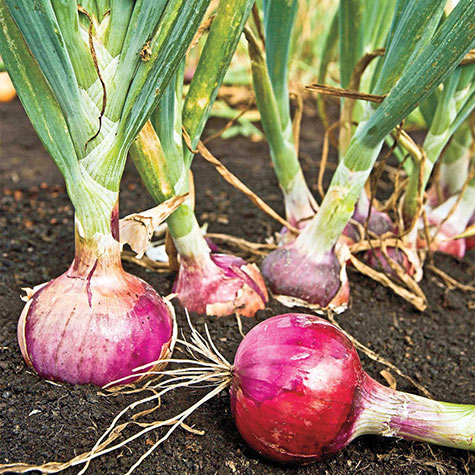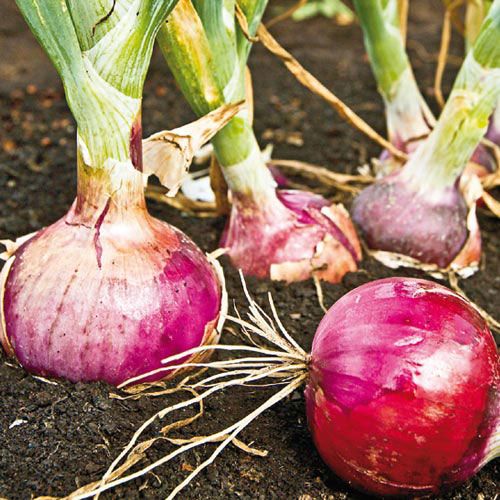
Onions are supposed to be fool-proof. At least, that was what I was told in the small produce department of our local market. They were selling onion sets- red, white, or yellow- and at first I just thought they were mini-onions. The gentleman stacking the sets explained that all I had to do was poke a hole in the earth, stick the onion in, and it would grow. Seemed easy enough for me- but, of course, I soon ended up with a mess of wasted white onion sets.
Where did I go wrong? First up, onions can be planted three different ways- through seeds, through sets, or through transplants. Choosing to plant by seed means you have a greater variety of onions to choose from; however, it can take a lot longer- up to four months- for your crop to mature. Sets are bulbs that were grown the previous year, harvested while small and immature, and ready to plant. Sets do grow fast and are early to harvest, but they can also send a flower stalk up too early (called bolting). Transplants are seedlings that were started during the current season, and normally do form good bulbs in under 70 days, but they are more subject to disease and choice of varieties is limited. I had not really investigated planting onions at all, so I just grabbed what was there – a set- and chose white because I liked cooking with white onions. Looking back, I should have done some research so I had an idea of what kinds of onions would do best in my Northern garden, then ordered transplants or arranged to start seeds indoors for the next growing season.
Next, I did simply poke a hole in the ground, stick the onion bulb in, cover and wait. Instead, I needed to start my onions in furrows (raised rows) and prior to planting my onions, I should have mixed some fertilizer, such as Gurney’s Onion Food into the soil at the bottom of the furrow, so as my onion started growing roots, the food would be there. And, as my onions began to grow, I needed to lightly mulch around them with a fine mulch (grass clippings would do) and keep the area weed free and with a steady supply of water. I know that year I mulched everything in my vegetable garden with my leftover mulch from out front, and I have no idea how much water the onions were- or were not- getting. Because I didn’t know what type of onion I had (white sets, variety unknown), I could not determine the amount of sunlight my onions needed. Keep in mind to form nice, big roots, some varieties that need only 10-12 hours of summer light do best in the south, while others that are long-day types (13-16 hours of summer light) do better in the Northern latitudes.
Onions can do well in raised beds, and I think this upcoming season, I’ll try planting mine in raised beds- and also try growing from transplants, particularly Gurney’s Choice Candy Hybrid Onion. The Candy Hybrid does well in any area of the country and is considered a day-neutral onion. Or, I could try Red Candy Apple Onion as it is also day-neutral, and the color is sublime.
What about you? Do you have a favorite onion? Or some onion growing tips? Let us know in the comments!

